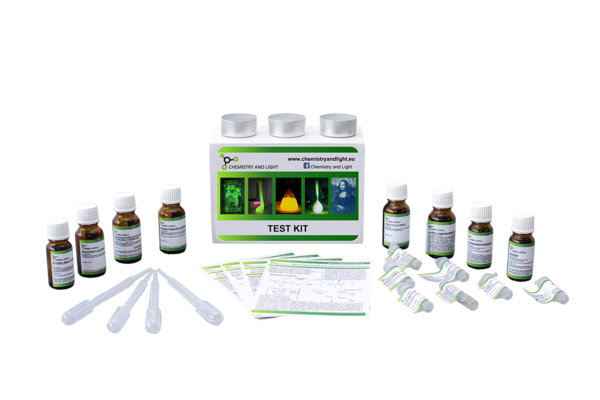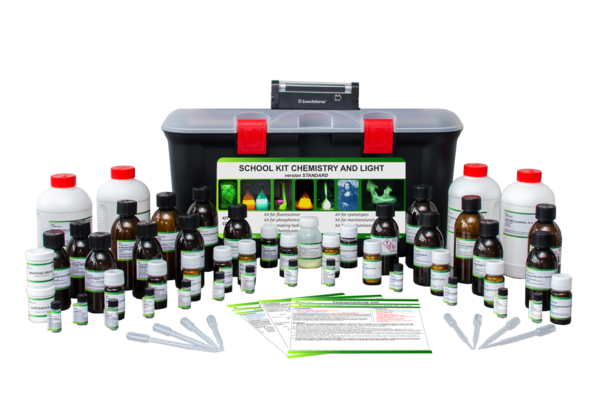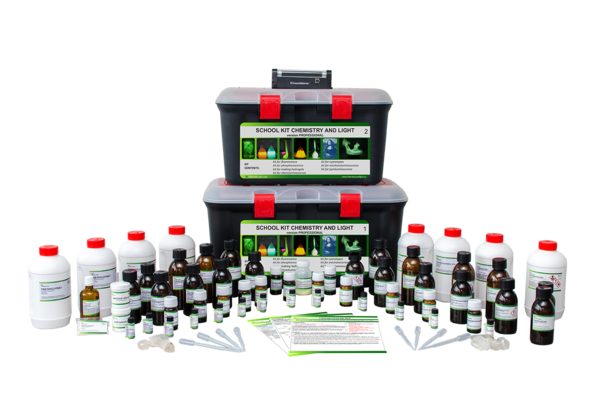Attractive and safe chemical experiments linked to educational programmes
Mechanoluminescence
Mechanoluminescence (ML) represents one of the most interesting and least understood luminescence phenomena. ML means that light is emitted during mechanical stress of solids. Mechanoluminescence is divided into several categories depending on the nature of the mechanical stimulus.
The most common form is triboluminescence, also called fractoluminescence which takes place when crystals are mechanically stressed (crushing, milling, rubbing) leading to separation of crystal surfaces.
The historically first written example of triboluminescence comes from the English philosopher Francis Bacon from his 1605 book „Of The Advancement of Learning“ and later in „Novum Organum“ from 1620. In these books, Bacon describes appearance of light during crushing of cane sugar.
It is known that some Native American tribes used triboluminescence of certain minerals, like quartz, for ceremonial purposes.
Piezoluminescence is another subcategory of mechanoluminescence. It differs from triboluminescence in the fact that the crystals do not need to be fractured, a mere pressure on the crystal surface leads to appearance of light.
Crystalloluminescence is another remarkable subcategory of mechanoluminescence. During this phenomenon,a growth of crystals from saturated solution causes mechanical stress of the crystal surfaces leading to light emission. There are examples of salts giving off quite strong crystalloluminescence from aqueous solution (crystallisation of barium or strontium bromates), but there are even examples of crystalloluminescence from the melt (for example N-isopropylcarbazole)
The most accepted explanation of tribo- and crystalloluminescence is that fracture of crystals leads to emergence of the fragments with large opposite electric charges. Subsequent electric discharge can either excite the surrounding gas or the molecules at the crystal surface. Triboluminescence of cane sugar produces miniature electric discharges that excite nitrogen which is absorbed at the crystal surfaces. The triboluminescence spectrum of saccharose is therefore spectrally very similar to regular lightning.
There are examples of highly triboluminescent organic compounds which give so strong triboluminescence that it is observable even during daylight. Some notable examples involve Eu(dibenzoylmethanato) complexes, anthracene derivatives, N-acetylanthranilic acid or [Cu(SCN)(Ph3P)(py)2].
The last subcategory of mechanoluminescence is sonoluminescence. Sonoluminescence is a physical phenomenon in which a gas-saturated liquid gives off short light bursts as a result of sudden pressure changes applied to it. The trigger for sonoluminescence is cavitation (emergence and perishing of cavities in liquids) which is induced in laboratory by ultrasound irradiation. The most accepted theory says that implosion of gas bubbles during cavitation produces extreme inner temperatures in the bubbles (some experiments indicate temperatures up to 10 000°C) as a result of extreme adiabatic compression. Gas heated to such a temperature gives off a continuous emission spectrum corresponding to the emission of a black body. Sonoluminescence of sea water gives additional yellow emission due to strong sodium excitation (D-line) as we know it from sodium lamps.
To sum up, mechanoluminescence is a very interesting phenomenon that up to now found very little practical applications. Triboluminescent materials can be used to make new damage sensors – for example triboluminescence-based damage sensors could find applications in spaceships (detection and localisation of damage) or in development of more sensitive crash sensors for car airbags.


